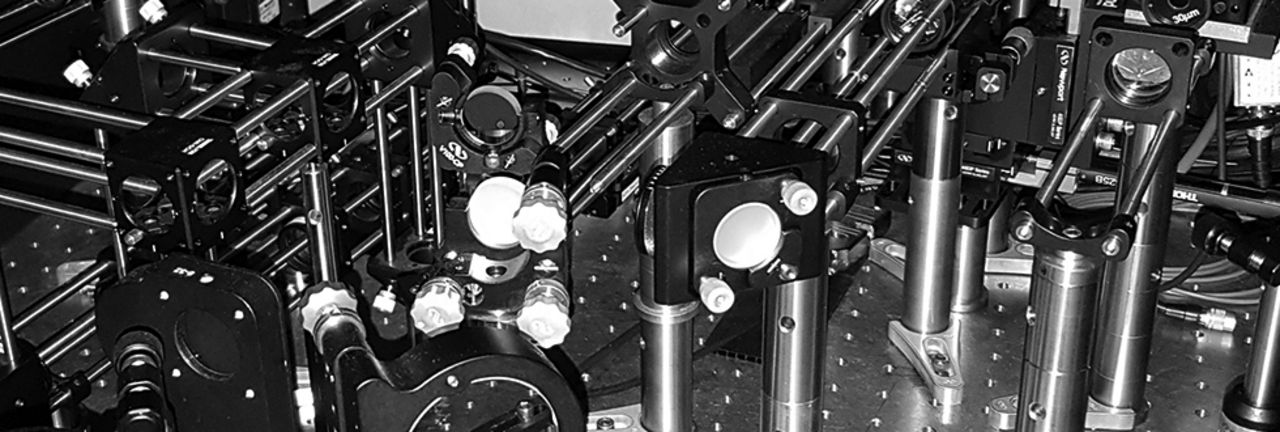
Technology and Development
Life sciences have benefitted ever since from high-resolution imaging techniques. We make strong use of advanced optical techniques and adaptive optics scanning light ophthalmoscopes (AOSLOs) to study the retina with single-cell resolution in the living eye.
Several aspects complicate this approach:
- the numerical aperture of the eye is limited,
- the optical quality of the eye is poor compared to manufactured optical components,
- the eye is incessantly moving and the tear film quality changes over time, and
- not all wavelengths are equally transmitted to the retina.
To compensate for these imperfections, we custom develop our optical systems. Moreover, we rely on ultrashort pulse lasers to excite fluorescence of endogenous retinal fluorophores via multiphoton absorption. These lasers emit at a broader spectral bandwidth than continuous-wave lasers and thus require sophisticated dispersion management.
To build the best-suited instruments for our scientific needs, our work contains a strong component of optical engineering.



